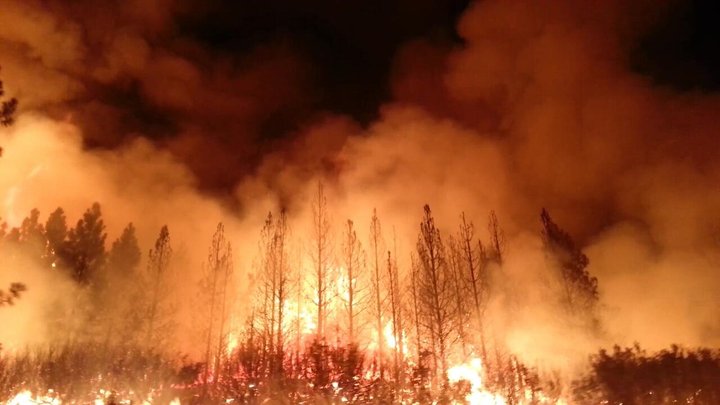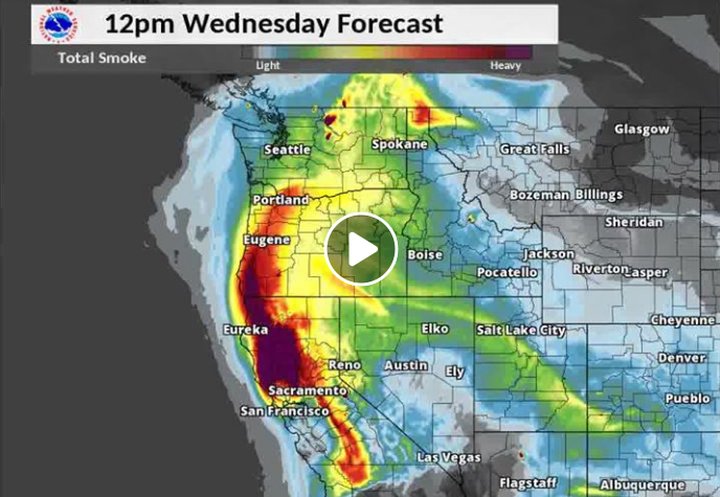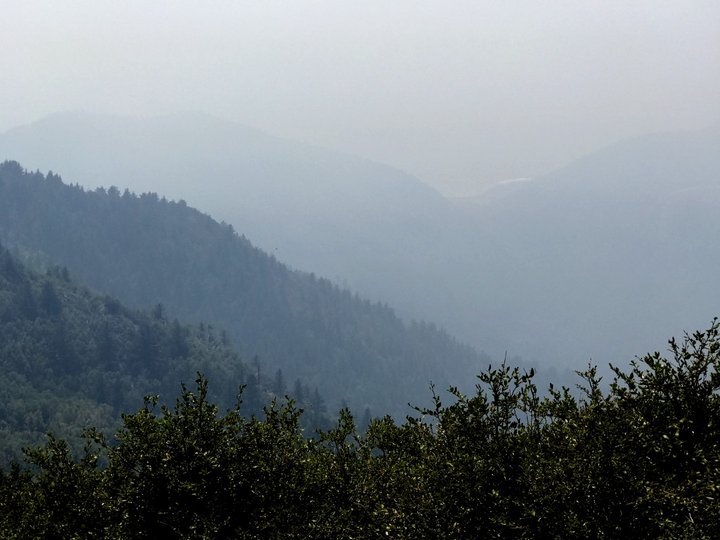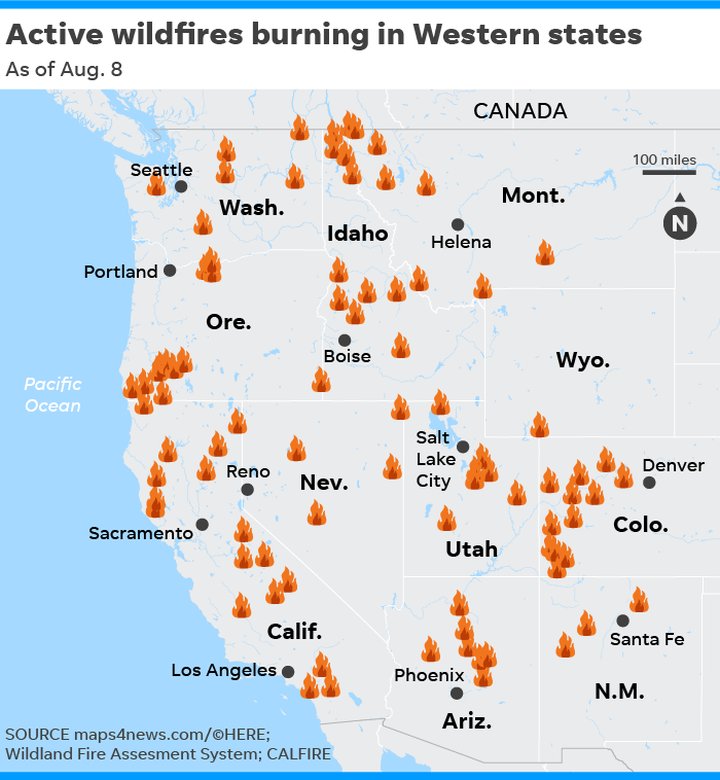Earth is an intrinsically flammable planet owing to its cover of carbon-rich vegetation, seasonally dry climates, atmospheric oxygen, and widespread lightning and volcanic ignitions.
— Wikipedia

2013 Rim Fire, Stanislaus National Forest (U.S. Department of Agriculture, public domain)
Turns out—I didn’t know this—the fires raging across this state and Oregon have been “made so much worse by the bad environmental laws which aren’t allowing massive amount[s] of readily available water to be properly utilized,” according to POTUS’s tweet a week ago. CalFire disagrees, but what do they know? Daniel Berlant, Assistant Deputy Director, said, “we have plenty of water to fight these wildfires.” Who’ya going to believe, that guy or someone who actually fights fires?
No question, the planet’s getting warmer, climate’s more extreme, we can settle in for long, hot, smoky summers for the foreseeable future … and (virtually all climatologists agree) it’s our fault. A research paper in the Proceedings of the National Academy of Sciences a couple of years ago delved deeply into the link between human-caused warming and western U.S. forest fires, concluding:
…human-caused climate change caused over half of the documented increases in fuel aridity since the 1970s… [and] contributed to an additional 4.2 million ha of forest fire area during 1984–2015, nearly doubling the forest fire area expected in its absence.
That’s over 16,000 square miles, for those of us who still divide our loyalties between imperial and metric (hectares). To put it in more visceral terms, 10% of the total area of California burned in 30 years. Because of you and me.

Western states’ smoke intensity for last Wednesday noon. You can view a dramatic “movie” of changing smoke intensity last week here. (U.S. National Weather Service, Boise, Idaho)
Here on the coast, it’s hard to get a real sense of just how bad the current fires are—the odd hazy day, but mostly clear or overcast, not a whiff of forest-fire smoke. Not so when we stood on King Peak in SoHum a couple of days ago—that’s the highest point in the King Range, the one that the Lost Coast Trail skirts on the coast between the mouth of the Mattole and Shelter Cove. We saw hazy air in all directions, presumably from the Carr Fire (nearly 300 square miles, 1,000-plus homes destroyed)— centered near Whiskeytown on 299—or perhaps the smoke came from the Mendocino Complex Fire, burning north and west of Clear Lake. That’s the largest wildfire in California’s history, nearly 500 square miles: about the size of the city of Los Angeles, or the island of Kauai. Or, if you’re a localite, 20 times the area of Humboldt Bay at high tide.

Smoke haze down to the ocean (right center) from King Peak (4,087 ft.) last week. (Barry Evans)
Of course, not all wildfires are caused by humans, either directly or as a result of global warming, poor forestry practices (such as extinguishing naturally occurring underbrush fires), arson and the like. Wildfires have been a feature of our planet for at least 400 million years, when our ancestors were still swimming in the oceans, according to fossil evidence. But we’ve certainly managed to up the ante by creating—at least here in California, where 14 of the largest 20 fires have occurred since 2000—a warmer and dryer climate in which wildfires, once started, can quickly spread out of control. The future is more of the same:
- At least 20,000 square miles burned every year in the U.S. and Canada;
- $1.2+ billion spent annually in California alone to suppress wildfires;
- Predictably increasing loss of property and life;
- Year-round fire seasons;
- Weirder and weirder comments by folks who just don’t get it.

CLICK TO MANAGE